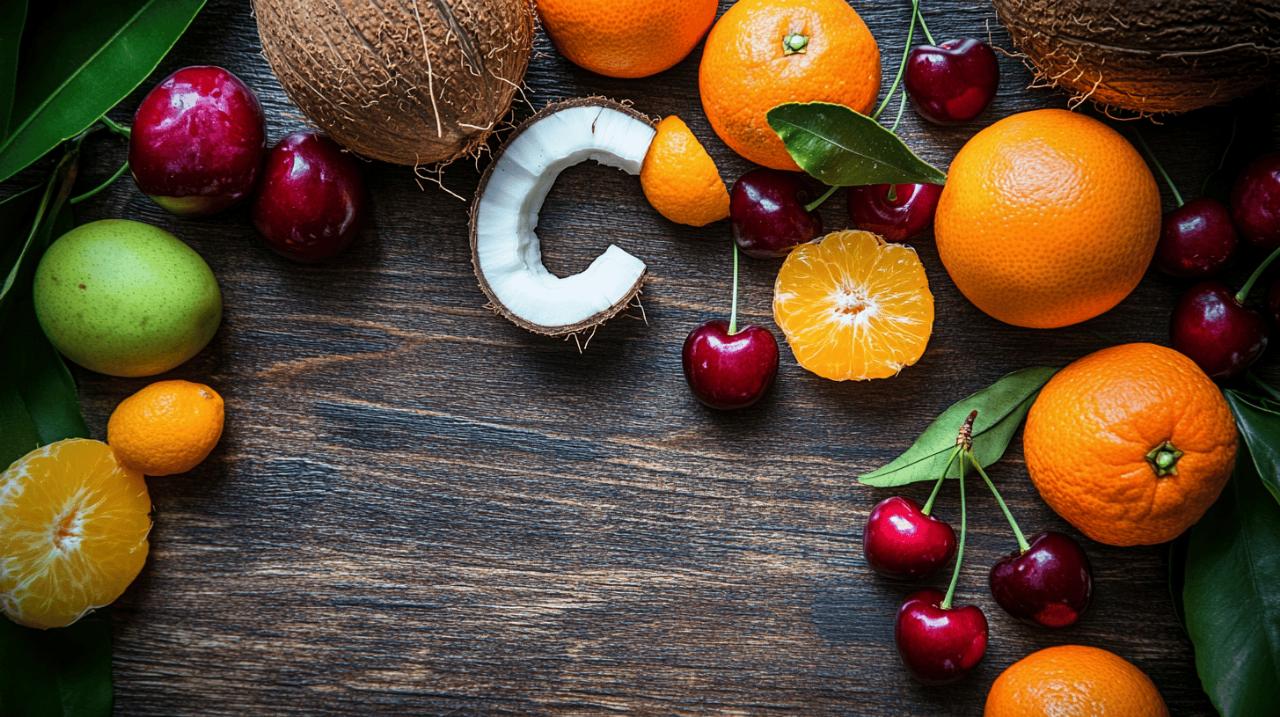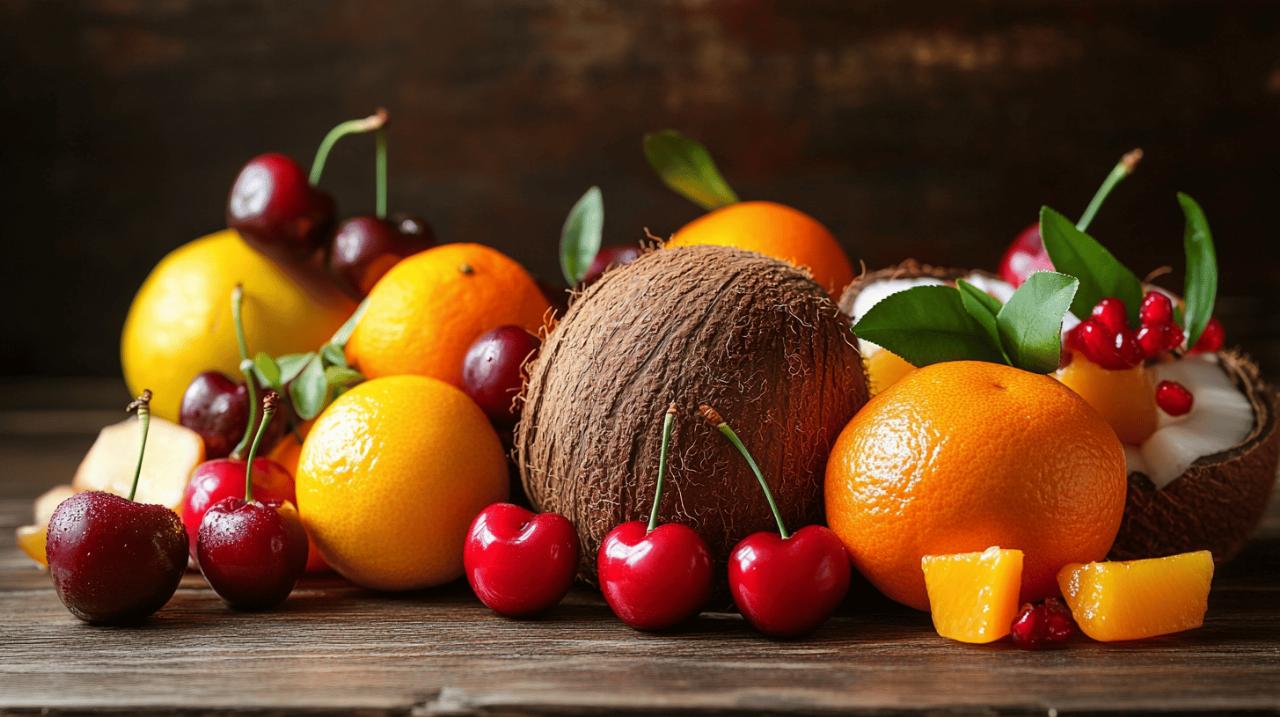For UK gardening enthusiasts looking to diversify their fruit gardens, those beginning with 'C' offer an exciting range of options that can thrive in British conditions. From the familiar cherry to the exotic cape gooseberry, these fruits present varying challenges and rewards for growers across the country. This comprehensive guide explores cultivation techniques, varieties, and practical advice tailored specifically for UK climate conditions.
Cherries and Their Varieties in British Gardens
Cherries, or 'cerise' as they're traditionally known, have been cultivated in British gardens for centuries. These small, round fruits with their distinctive sweet or tart flavours make them popular choices for home gardeners. When properly cared for, cherry trees can become magnificent features in gardens while providing abundant harvests during summer months.
Sweet vs Sour Cherries: Which to Grow in Your Garden
The decision between sweet and sour cherry varieties largely depends on your garden conditions and culinary preferences. Sweet cherries (Prunus avium) typically require more sunlight and sheltered positions to thrive in the UK climate. They produce larger, sweeter fruits perfect for fresh eating. Varieties like 'Stella' and 'Sunburst' are self-fertile options well-suited to British gardens. Sour cherries (Prunus cerasus), meanwhile, offer greater tolerance to less ideal conditions, making them more forgiving for beginners. The 'Morello' variety is particularly successful in UK gardens, even in north-facing or partially shaded positions, producing tart fruits excellent for cooking, jams and preserves.
Seasonal Care Tips for Cherry Trees in the UK Climate
Cherry trees require attentive seasonal care to thrive in British weather conditions. Winter pruning is essential but must be done during dry days to prevent silver leaf disease. During spring, protection from late frosts is crucial when trees are flowering. Summer brings the challenge of bird predation on ripening fruit; netting is often necessary to secure your harvest. Autumn care focuses on clearing fallen leaves to prevent disease build-up. Throughout the year, ensure adequate watering during dry spells, particularly for newly established trees. With proper care, cherry trees can become productive features in your garden for decades.
Citrus fruits that thrive in british conditions
Growing citrus in Britain presents unique challenges due to our cool climate, but with the right approach, several varieties can successfully produce fruit. The citron, with its thick aromatic rind, represents one of the oldest cultivated citrus fruits and has particular cultural significance in Mediterranean cooking. While challenging to grow outdoors year-round in most of Britain, dedicated gardeners have developed methods to enjoy these tropical delights.
Growing Citrons and Calamondins in Protected UK Spaces
Citrons require special attention in the UK climate as they're particularly sensitive to cold. They thrive best in conservatories or greenhouses where temperature and humidity can be controlled. Calamondins, small citrus fruits resembling miniature oranges, offer a more adaptable option for British gardeners. These ornamental citrus trees produce abundant, intensely flavoured fruits that work wonderfully in marmalades and preserves. Both varieties benefit from winter protection with minimum temperatures of 7°C, making unheated greenhouses suitable only in the mildest UK regions. During summer months, these plants appreciate time outdoors in sunny, sheltered positions to boost fruit production, but must be brought inside before autumn temperatures drop.
Container cultivation techniques for cold-sensitive citrus
Container cultivation represents the most practical approach for growing citrus in Britain. Select pots with adequate drainage holes and use specialised citrus compost which provides the slightly acidic conditions these plants prefer. The ideal containers allow for root development while remaining movable, typically 30-45cm in diameter for mature plants. Regular feeding during the growing season with citrus-specific fertiliser supports healthy growth and fruit production. Watering requires careful balance; citrus dislike waterlogged conditions but need consistent moisture. During winter, reduce watering frequency but never allow the soil to completely dry out. This container approach provides the flexibility needed to protect these Mediterranean natives from Britain's unpredictable weather.
Curious and Uncommon C-Fruits for Adventurous Gardeners
 Beyond the familiar cherries and challenging citrus, several lesser-known fruits beginning with 'C' offer exciting possibilities for experimental UK gardeners. These unusual additions can provide conversation pieces and unique harvests that distinguish your garden from the ordinary.
Beyond the familiar cherries and challenging citrus, several lesser-known fruits beginning with 'C' offer exciting possibilities for experimental UK gardeners. These unusual additions can provide conversation pieces and unique harvests that distinguish your garden from the ordinary.
Cape gooseberry and cloudberry: hidden garden treasures
Cape gooseberry (Physalis peruviana) has gained popularity among adventurous UK gardeners. Native to South America but named for cultivation in South Africa, these plants produce small orange fruits enclosed in papery husks. The taste combines gooseberry tartness with tropical sweetness, making them versatile for both fresh eating and cooking. Each plant can yield approximately one kilogram of vitamin C-rich fruit. Though technically perennial, cape gooseberries perform best when grown annually in Britain, similar to tomatoes. Seeds should be started indoors in February or March at 15-18°C, then planted outside in May once frost danger passes. They require sunny positions and well-drained soil, with plants reaching about one metre in height and spread. Cloudberries, meanwhile, offer a native alternative, thriving in boggy, acidic conditions found naturally in northern Britain. These amber-coloured berries resemble raspberries and have a distinctive honey-like flavour highly prized in Scandinavian cuisine.
Cultivating chinese gooseberries (kiwi) in british soil
Chinese gooseberries, better known today as kiwi fruits, can indeed be grown successfully in British gardens with proper variety selection. Hardy varieties like 'Jenny' tolerate British winters and produce smaller but flavourful fruits similar to commercial kiwis. These vigorous climbing plants require strong support structures and take several years to establish before fruiting. Most varieties need male and female plants for pollination, though self-fertile options now exist. Kiwis thrive in sheltered locations with well-drained soil and protection from strong winds. While requiring patience, these unusual additions to British gardens can reward gardeners with abundant harvests of vitamin-rich fruits that would otherwise need importing from warmer climates.
Culinary uses and preservation methods
The diverse range of C-fruits grown in British gardens provides endless culinary possibilities. From immediate consumption to long-term preservation, understanding how to make the most of your harvest ensures year-round enjoyment of these garden treasures.
Seasonal recipes featuring british-grown c-fruits
Fresh cherries shine in summer desserts like classic cherry pie or the more sophisticated cherry clafoutis. For savoury applications, cherries pair wonderfully with game meats in traditional British cuisine. Cape gooseberries offer versatility in the kitchen, working beautifully in fruit salads, chutneys, or as decorative garnishes for desserts with their distinctive paper husks. Their tropical-gooseberry flavour profile makes them excellent additions to salsas or fruit-based sauces for poultry dishes. Citrus fruits grown in British containers provide precious zest and juice during winter months when other fresh fruit options diminish. Even the zest of ornamental varieties like calamondins can transform marinades, dressings, and baked goods with intense flavour. Cloudberries, though challenging to grow, produce exquisite jams and liqueurs that capture their unique honey-apricot character.
Freezing, jamming and preserving your c-fruit harvest
Preserving techniques allow gardeners to extend enjoyment of seasonal fruits throughout the year. Cherries freeze exceptionally well after pitting, maintaining quality for smoothies and baking. They also produce magnificent jams and preserves, with sour varieties particularly prized for their setting properties and balanced flavour. Cape gooseberries, with their naturally high pectin content, make excellent preserves with minimal added sugar. Their papery husks must be removed before processing, but the fruits need no other preparation. The traditional approach of bottling these fruits in sugar syrup maintains their distinctive flavour profile for winter enjoyment. Citrus preserves, especially marmalades made from home-grown fruit, offer intense flavour impossible to match with commercial alternatives. With proper preservation techniques, the brief seasonal abundance of these special fruits transforms into year-round culinary pleasure for British gardeners.



